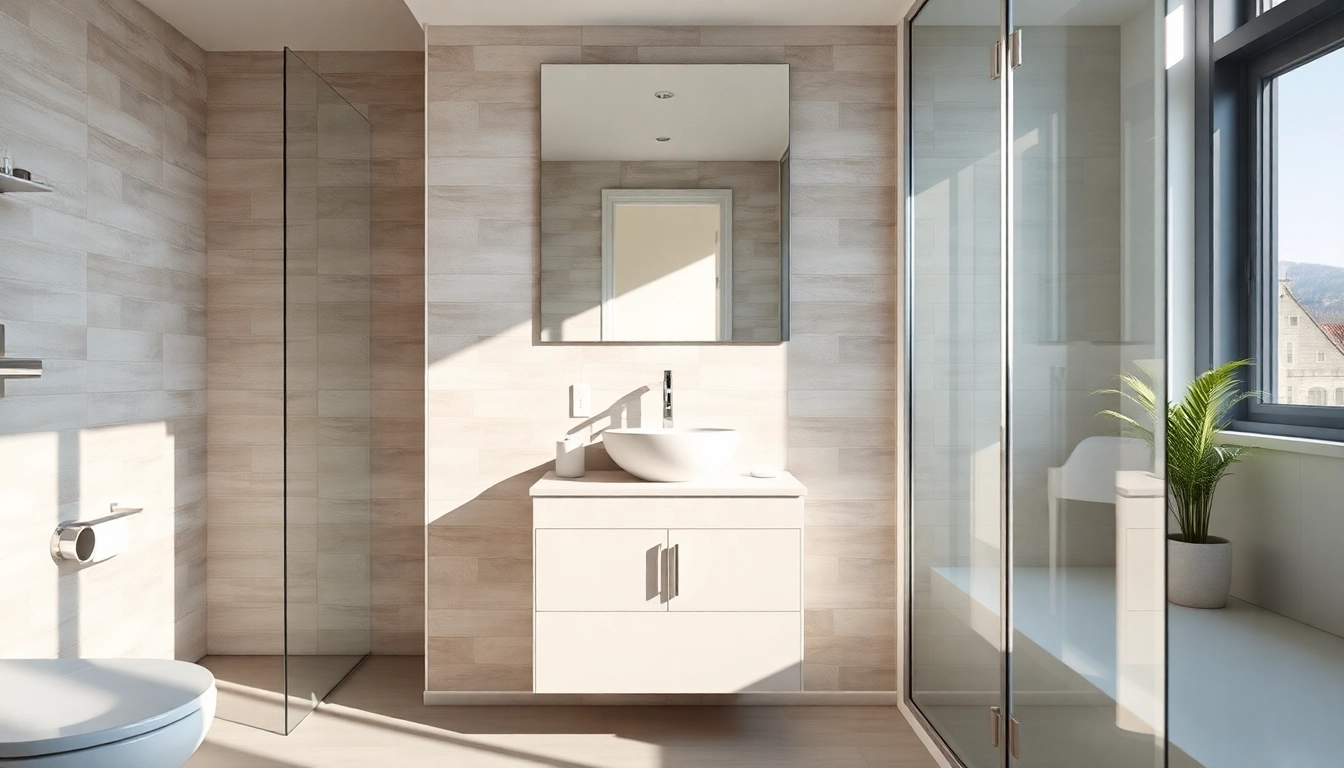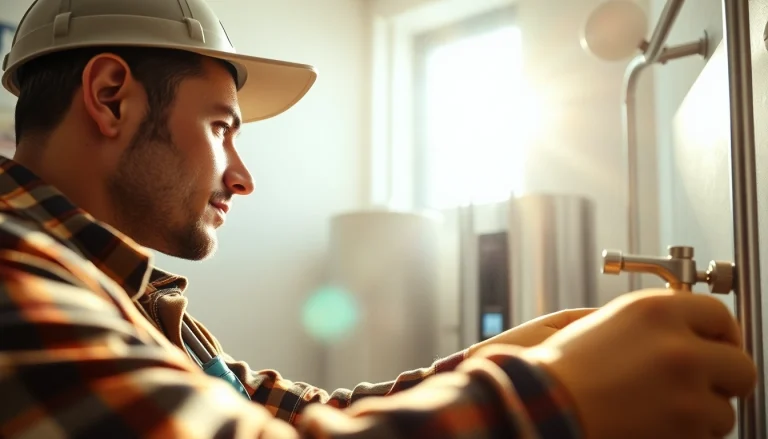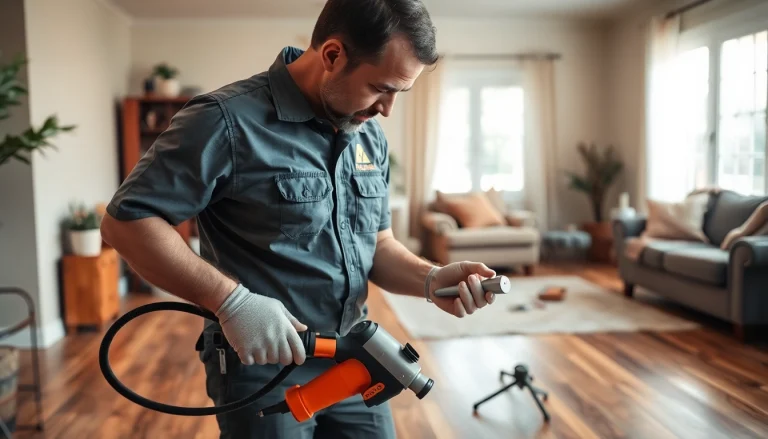
Understanding Small Bathroom Remodels
Embarking on a small bathroom remodel can be one of the most rewarding home improvement projects. It not only enhances the aesthetics of your space but significantly increases its functionality and value. If you’re looking for ideas and guidance on how to efficiently plan small bathroom remodels, you’ve landed at the right place. Here, we will explore everything from defining what constitutes a small bathroom to the critical benefits that can be gained from remodeling.
What Defines a Small Bathroom?
Traditionally, a small bathroom is one that measures less than 100 square feet. Common dimensions include compact layouts like 5×8 and 6×8 feet. However, the definition can vary based on the context of your home and personal perception. Importantly, it’s not just the physical dimensions, but also the layout configuration, light sources, and spatial workflow that define your bathroom’s overall effectiveness.
Common Challenges Faced
Renovating a small bathroom can present its own unique set of challenges, including:
- Limited Space: Fitting all necessary fixtures, such as a shower, toilet, and vanity, can be tricky without making the space feel cramped.
- Plumbing Layout: Existing plumbing might dictate where certain fixtures must be placed, limiting your design options.
- Storage Concerns: Finding adequate storage solutions is vital in a small bathroom where every inch counts.
- Natural Light: Small bathrooms often lack windows. Thus, strategic design decisions must be made to utilize artificial lighting effectively.
Key Benefits of Remodeling
Despite the challenges, there are numerous benefits to remodeling a small bathroom:
- Increased Property Value: A well-designed small bathroom can enhance the appeal of your property, potentially leading to a higher market value.
- Improved Functionality: Intelligent design choices can significantly enhance usability, making the space more enjoyable to use.
- Modern Aesthetics: Remodeling allows you to update features with contemporary materials and designs, aligning with current trends.
- Energy Efficiency: Upgraded fixtures and appliances can save water and energy, resulting in long-term cost savings.
Budgeting for Your Remodel
Establishing a budget is one of the most critical steps in planning a small bathroom remodel. Understanding the financial implications can help in making informed decisions throughout the renovation process.
Typical Costs for Small Bathroom Remodels
The cost of remodeling a small bathroom can vary widely based on location, design choices, size, and the extent of renovation. According to industry data, U.S. homeowners typically spend between $5,000 to $15,000 on small bathroom renovations. The costs breakdown as follows:
- Low-End Remodels: These can range from $3,000 to $5,000, typically involving cosmetic changes such as new paints, fixtures, or minor upgrades.
- Mid-Range Remodels: Generally falling between $6,000 to $12,000, this level often includes quality materials like ceramic tiles, solid-surface countertops, and the installation of a new toilet or shower.
- High-End Remodels: For luxury finishes and extensive renovations, expect to spend anywhere from $13,000 to $25,000, often including custom cabinetry and top-of-the-line fixtures.
Choosing Quality Materials
Investing in quality materials can impact the longevity and appearance of your remodel. When it comes to materials, consider:
- Tile: Select moisture-resistant tiles that provide durability and are easy to clean. Porcelain and ceramic tiles are popular for floors and walls.
- Countertops: Choose countertops that can withstand humidity and are resistant to stains, such as quartz or solid surface.
- Fixtures: Quality faucets, showerheads, and toilets may come with a higher upfront cost but can save on repairs and replacements in the long run.
Strategies for Budget-Friendly Updates
If you’re looking to remodel on a budget, here are some strategies to consider:
- Paint Instead of Replace: A fresh coat of paint can transform the look of your bathroom without the high cost of new cabinets.
- Refinish Existing Fixtures: Instead of replacing tubs or cabinets, consider refinishing them, which can produce like-new results at a fraction of the cost.
- Focus on Lighting: By changing light fixtures and incorporating reflective surfaces, you can make your small bathroom appear larger without a complete overhaul.
- Use Open Shelving: Instead of bulky cabinets, utilize open shelving to save space and also provide aesthetic appeal.
Design Ideas to Maximize Space
Maximizing space in a small bathroom is essential. Thoughtful design can ensure that the area feels spacious while making it functional.
Innovative Layouts for Compact Bathing Areas
When designing your small bathroom, consider these innovative layout ideas:
- Walk-In Showers: Replacing a tub with a walk-in shower can open up the space. Choose a glass door to maintain a sense of openness.
- Corner Sinks: Installing a corner sink can save valuable floor space without sacrificing functionality.
- Pocket Doors: If possible, replace traditional doors with pocket doors that slide into the wall and save space.
Incorporating Storage Solutions
Effective storage is vital in small bathrooms. Here are some solutions to consider:
- Over-the-Toilet Storage: Utilize the space above the toilet with shelving or cabinets.
- Built-In Cabinets: Consider custom built-ins or cabinetry to minimize clutter and maximize space.
- Under-Vanity Storage: For under-sink areas, use baskets or drawers to keep items organized and easily accessible.
Color Schemes that Create the Illusion of Space
Colors can dramatically affect how spacious a small bathroom feels. Here are some color strategies:
- Light Colors: Shades like soft whites, light blues, and pale greens can make space feel larger and more open.
- Monochromatic Schemes: Using a single hue in various shades creates a cohesive look and can enhance depth perception.
- Accent Walls: Adding a darker or bolder color on one wall can create a focal point and add dimension without overwhelming the space.
Before and After: Transformative Small Bathroom Remodels
The best way to inspire your remodel is through success stories. This section highlights impressive transformations that showcase the power of creativity and planning.
Showcasing Successful Renovations
Many homeowners have turned outdated and cramped bathrooms into stunning retreats. For example, one family transformed their dark, cluttered bathroom into a bright oasis by utilizing lighter colors, a walk-in shower, and efficient built-in storage.
Inspiring Visuals that Motivate
Visual examples can offer a plethora of ideas while sparking inspiration:
- Consider referencing platforms like Houzz and Pinterest for small bathroom designs.
- Before-and-after photos often highlight the importance of strategic planning and execution, demonstrating how small changes can create major improvements.
Top Tips from DIY Enthusiasts
Many DIY enthusiasts share their experiences and tips, which can be immensely helpful. Here are some top suggestions:
- Plan Thoroughly: Investing time in planning out your remodel can save headaches later; measure, sketch, and visualize the end result.
- Embrace Flexibility: Be ready to adapt your designs and plans based on the realities you encounter.
- Document the Process: Keeping a journal or blog can help track your progress and offer support to others in similar situations.
DIY or Hire a Professional: What’s Best for You?
One crucial decision during your remodel will be whether to DIY or hire a professional. Here’s how to navigate that choice.
Assessing Your Skill Level
Evaluate your skill level realistically. For simple projects like painting or changing fixtures, DIY might be viable. However, if plumbing or electrical work is involved, consider hiring a professional.
When to Call in the Experts
Certain tasks necessitate the expertise of professionals. These might include:
- Complex plumbing work
- Electrical upgrades or installations
- Structural changes, such as moving walls
Balancing Cost and Quality in Professional Help
While hiring professionals can seem expensive, balancing cost and quality is essential:
- Get Multiple Quotes: Always solicit several estimates to gauge the going rates for your project.
- Research Credentials: Verify references, portfolios, and licenses to ensure high-quality workmanship.
- Discuss the Scope: Communicate your budget and expectations clearly with potential contractors.






